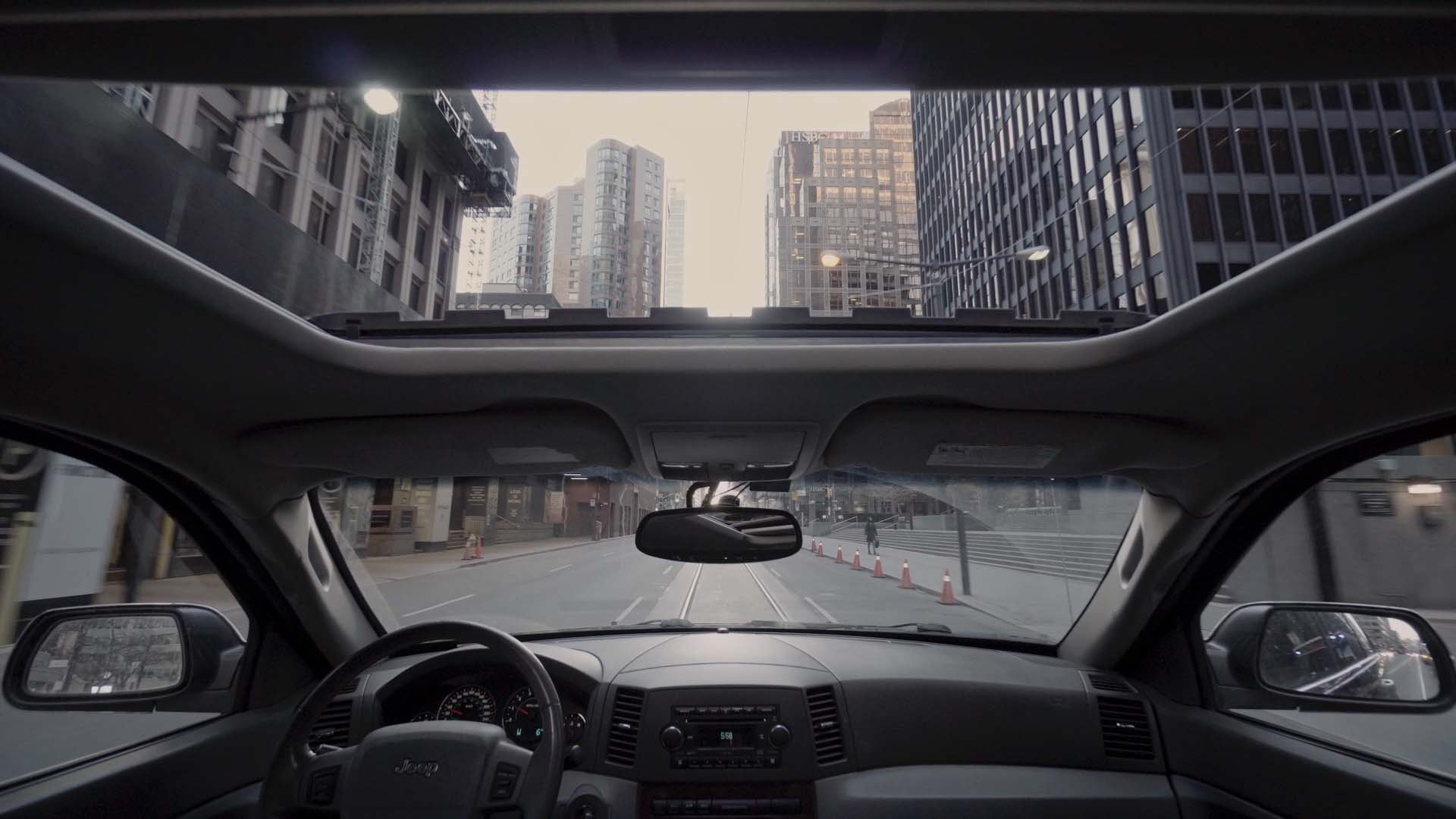
‘Homo Mobilis’ by Nikola Miloradovic
Master of Architecture (2019-2021)
Architectural Association School of Architecture, London, UK
Key supervisors: Ila Beka, Louise Lemoine, Gili Merin
keywords: observational cinema, automobile urbanism, speculative storytelling, documentary film, social interaction, future cities
Homo Mobilis is a final-year Diploma Project completed for the Master of Architecture offered by the Architectural Association School of Architecture. It was awarded with Commendation upon completion in June 2021. It was done within the context of Diploma 16, a film-based studio run by filmmakers Ila Beka and Louise Lemoine, and photographer Gili Merin. Working directly in the medium of film as the final project, the work is done in a documentary style of Cinéma Vérité, where the city transformation during the Covid-19 pandemic is documented to record the lived experience of the time. It’s is inspired by documentary films of similar genres done by Gianfranco Rosi, Michael Glawogger, Chris Marker, and various other filmmakers in this stream, aiming at a more truthful record of humans and their environment.
The project looks at the automobile dependency of North American cities, and suggests a near-future species of humans who have forgotten to walk, but engage with the city solely through their vehicle.
Looking at the history of Toronto’s urban development as a parallel stream to that of the invention of the modern automobile, this project aims to understand the car’s effect on the city. An initial case-study in Term 1 focused on The Gardiner Expressway, an elevated highway cutting through the core of Toronto, to understand the consequences of automobile-urbanism on the deteriorating public space of this city. While spending countless hours below this monolithic infrastructure, observing the harsh leftover space ignored and generally unappreciated by the public, it became obvious that there was a larger issue within the city. The highway was only a symptom of a greater social condition endemic to prototypical North American cities.
The automobile has become a necessary reality, whether it be for commuting from suburban homes to downtown work, shopping trips to the malls sprawled with parking plazas, or weekend joy rides out of the city. Our dependence on the automobile has shifted social considerations into the realms of efficiency and pragmatism. As Jean Baudrillard writes in his book America, “breakfast, movie, religious service, love and death — the whole of life as a drive-in” (1986). Now add a global pandemic on top of it all, a condition that exacerbates the existing social isolation between people, and we begin to see a strange world where our minds and bodies have become more familiar with the inside of our car than with open public spaces.
This film explores this new species called Homo Mobilis: a creature who is dependent on the car, who is foreign to the sidewalk, who knows no physical social engagements, and inhabits a city whose spaces are continually transforming to suit the needs of the automobile operators. In this process, not only does the street lose its function, but the entire social fabric of the city disintegrates in the name of efficiency, convenience, and safety.
The automobile is then seen as more than a method of transportation. This social prison that we have created, acts both as an extension of the private living room - where every comfort and environmental control is afforded - as well as a device for observation. In this sense, the automobile is used as a continuously moving dolly to shoot the film of Toronto, from the perspective of a city dweller in the near future, living the street-life of the city, a new street void of people but busy of people-controlled-machines.
At a time when a global pandemic tests the threshold of social comfort, experiencing the city through the filter of the car becomes even more amplified, and all city amenities are reconfigured to be offered to the car-operators. It hints at the future of our cities, where walkable public space is slowly disintegrating. The documenting of this unique situation in the city is relevant for the future understanding of how cities might develop in the post-pandemic landscape.
Nikola Miloradovic / MArch / AA / 2019-21
Nikola is a filmmaker and architectural designer. He graduated from the University of Waterloo with a degree in Architectural Studies, and from the Architectural Association with a Master of Architecture. He has collaborated with artists working in contemporary sculpture, experimental architecture, and photography / film.







